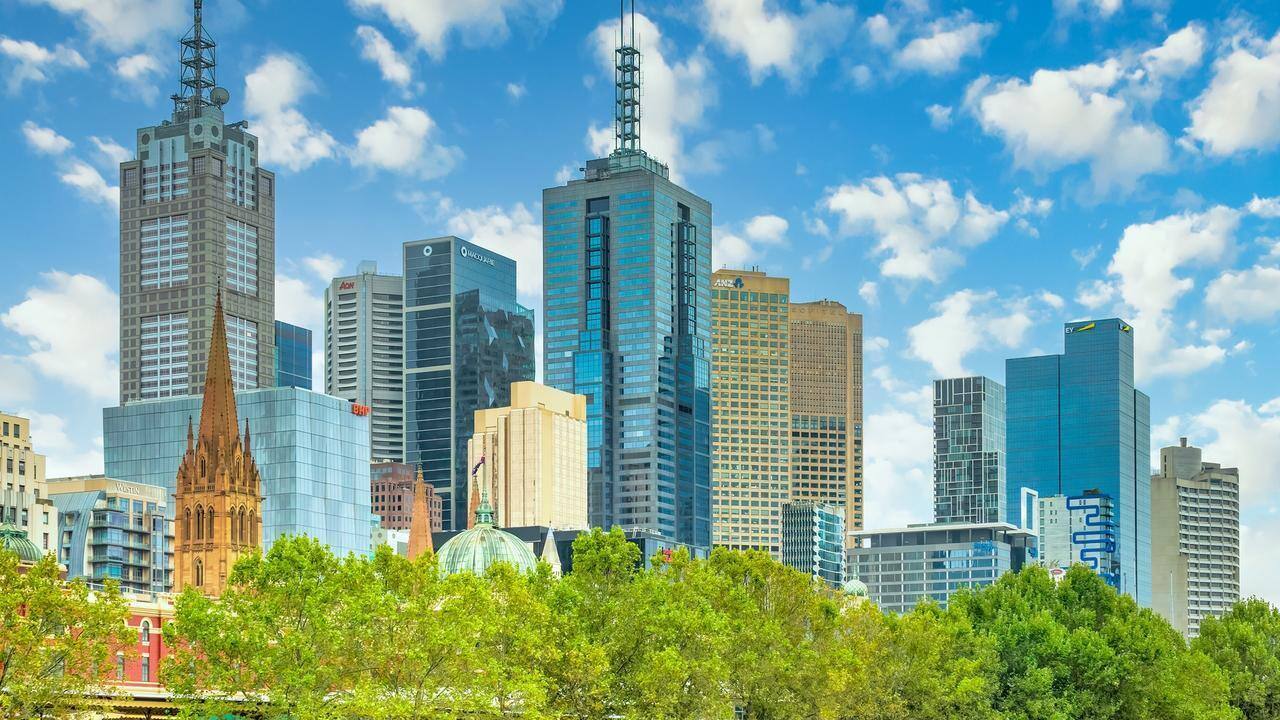Features > Property News & Insights > Housing Trends
Home values accelerate, as low supply pushes up prices dramatically

KEY POINTS
- Australian residential home values have jumped 0.8% in May, their largest monthly gain since October last year
- CoreLogic says low levels of homes for sale in Perth, Adelaide and Brisbane have led to big value jumps in those cities
- Brisbane has by-passed Canberra to become Australia’s second most expensive property market behind Sydney, which has now fully recovered from a post-Covid price downturn
National home values rose 0.8% in May, according to new data from CoreLogic, setting a new median benchmark of $785,556.
It’s the 16th consecutive month of home price growth and the largest monthly gain since October last year.
The fact that growth is accelerating again shows home buyers have shrugged off no less than 13 interest rate rises from the Reserve Bank of Australia and a per capita recession to keep driving real estate prices up.
The mid-sized capital cities once again saw the greatest increase in value in CoreLogic’s monthly Home Value Index for May, with Perth up 2.0%, Adelaide up 1.8% and Brisbane up by 1.4%.
CoreLogic’s research director, Tim Lawless, says the extraordinary monthly growth is probably best explained by the extremely low levels of homes for sale in those markets.
“The number of properties available for sale in Perth and Adelaide remain more than 40% below the five-year average for this time of the year while Brisbane listings are 34% below average,” Mr Lawless says.
“Fresh listings are being absorbed rapidly by market demand, keeping stock levels low and upward pressure on prices.”
Brisbane is now Australia’s second-most-expensive market
With home prices in Brisbane steaming ahead, CoreLogic says the Queensland capital has now overtaken Canberra as the city with the second-highest median dwelling values.
House values in Brisbane are now also higher than in Melbourne.
In May, the median house value in Brisbane was $937,479—$190 above Melbourne’s median.
The median unit in the Queensland capital was $615,429, which is also higher than the median unit in Melbourne, valued at $614,299.
Before the pandemic, CoreLogic says Melbourne’s median dwelling value was around 37% more than Brisbane’s, with Canberra holding a 24% price premium above the Sunshine State capital.
However, home values in Brisbane have increased at more than five times the pace of Melbourne prices since the onset of COVID-19.
Sydney recovers
The CoreLogic figures show Australia’s most expensive property market has now reached a new milestone.
Sydney home values dropped by 12.4% after a peak in January 2022.
Since the downturn bottomed out a year later, Sydney prices have posted a 14.1% rise, and are now at a point equalling the earlier record high set in January 2022, with the median dwelling in the harbour city valued at $1,156,020 (Houses at $1,441,957 and Units at $848,961).
Growth driven by the bottom end of the market
One of the most interesting findings in the latest CoreLogic HVI data is how more expensive homes have generally shown the lowest rate of growth over the past year.
CoreLogic’s Tim Lawless says this trend of slower growth in the upper quartile (or most expensive segment of the market) is apparent across every capital city except Darwin, “demonstrating stronger conditions across the more affordable price points of the market.”
Across the combined capitals, upper-quartile dwelling values are up 6.7% over the past year, compared with a 13.4% gain across the lower quartile of the market.
“After recording a higher rate of gain through the early months of the growth cycle, conditions have faded across the upper quartile as borrowing capacity reduced and affordability constraints deflected demand towards middle-and-lower-priced properties,” he says.
This move to relative affordability was clearly illustrated in recent data that showed a number of suburbs in Sydney’s west—where house prices are well below the city-wide average—had seen price growth of 6.5% to 9% in just three months.
Rent growth slows marginally, yields rise
In some hopeful news for tenants, CoreLogic says the pace of rent growth has eased over the past few months. The firm’s national rental index rose 0.7% in May, the lowest monthly change since December last year.
Rents are up 8.5% over the past 12 months, down from 8.9% a year ago and a 9.3% rise in the year to May 2022.
However, in good news for investors, with rents rising at an even faster pace than home values, gross rental yields have continued to trend higher, rising to 3.56% across the combined capitals—the highest figure since August 2019.
What do other data analytics firms say?

Using a different methodology, REA Group’s PropTrack says national home prices increased 0.30% in May, with the growth being driven entirely by the capital cities (+0.41%) while regional prices remained flat.
Like CoreLogic, PropTrack says Perth (20.58%) has been the standout city for home price growth over the past year, followed by Adelaide (14.49%) and Brisbane (13.69%).
“With housing supply unable to meet demand, national home prices have cycled through 17 consecutive months of growth to hit a fresh peak in May,” says PropTrack Senior Economist Eleanor Creagh.
“Despite some easing in the rate of population growth and more stock on the market, home prices are expected to lift further in the months ahead.”
Neoval, the data analytics firm backed by real estate giant Ray White, has a similar take, estimating both houses and units across Australia increased by 0.6% in price in May, with the capital cities growing slightly faster than the regions.

“Price growth trends are likely to be similar in coming months,” says Ray White Chief Economist Nerida Conisbee.
Stay Up to Date
with the Latest Australian Property News, Insights & Education.




.png?width=292&height=292&name=Copy%20Link%20(1).png)
 SIGN UP FOR FREE NEWSLETTER
SIGN UP FOR FREE NEWSLETTER








.jpg?width=1920&height=1080&name=Warning%2c%20You%20Might%20Be%20Facing%20Higher%20Taxes%20Soon%20(1).jpg)





.png?width=1920&height=1080&name=Rate%20Drops%20Signal%20BIGGEST%20Property%20Boom%20in%20DECADES%20(1).png)

.jpg?width=1920&height=1080&name=Labor%20vs%20Liberal%20These%20Housing%20Policies%20Could%20Change%20the%20Property%20Market%20Forever%20(1).jpg)
.jpg?width=1920&height=1080&name=QLD%20Slashes%20Stamp%20Duty%20Big%20News%20for%20Investors%20%26%20Home%20Buyers%20(1).jpg)
.jpg?width=1920&height=1080&name=Trump%20Just%20Slapped%20Tariffs%20%E2%80%93%20Here%E2%80%99s%20What%20It%20Means%20for%20Australia%20(1).jpg)
.jpg?width=1920&height=1080&name=Federal%20Budget%202025%20More%20Debt%2c%20No%20Housing%20%E2%80%93%20Here%E2%80%99s%20What%20You%20Need%20to%20Know%20(1).jpg)
.jpg?width=1920&height=1080&name=Australias%20Housing%20Crisis%20is%20about%20to%20get%20MUCH%20Worse%20(New%20Data%20Warns).jpg)
%20(1).jpg?width=1920&height=1080&name=Australias%20RENTAL%20CRISIS%20Hits%20ROCK%20BOTTOM!%20(2025%20Update)%20(1).jpg)
%20(1).png?width=1920&height=1080&name=Is%20Adelaide%20Still%20a%20Good%20Property%20Investment%20(2025%20UPDATE)%20(1).png)
.jpg?width=1920&height=1080&name=RBA%20Shocks%20with%20Rate%20Cuts!%20What%E2%80%99s%20Next%20for%20Property%20Investors%20(1).jpg)
%20(1).jpg?width=1920&height=1080&name=I%20Predict%20The%20Feb%20Rate%20Cut%20(My%20Price%20Growth%20Prediction)%20(1).jpg)
.png?width=1920&height=1080&name=Why%20Property%20Prices%20Will%20Rise%20in%202025%20Market%20Predictions%20(1).png)
.jpg?width=1920&height=1080&name=Why%20Investors%20Are%20Choosing%20Apartments%20Over%20Houses%202%20(1).jpg)
.jpg?width=1920&height=1080&name=Why%20Rate%20Cuts%20Will%20Trigger%20A%20Property%20Boom%20(1).jpg)
.jpg?width=1920&height=1080&name=Retire%20On%202Million%20With%20One%20Property%20(Using%20SMSF).jpg)
.jpg?width=1920&height=1080&name=4%20Reasons%20Why%20You%20Should%20Invest%20in%20Melbourne%20Now%20(1).jpg)
%20(1).jpg?width=1920&height=1080&name=Old%20Property%20vs%20New%20Property%20(Facts%20and%20Figures%20Revealed)%20(1).jpg)
%20(1).jpg?width=1920&height=1080&name=Will%20The%20New%20QLD%20Govt%20Create%20a%20Property%20Boom%20or%20Bust%20(My%20Prediction)%20(1).jpg)
%20Scott%20Kuru%20(1).jpg?width=1920&height=1080&name=Inflation%20Hits%20Three-Year%20Low%20(Will%20RBA%20Cut%20Rates%20Soon)%20Scott%20Kuru%20(1).jpg)
.jpg?width=1920&height=1080&name=How%20to%20Buy%20Investment%20Property%20Through%20SMSF_%20The%20Ultimate%20Guide%20(1).jpg)
.jpg?width=1920&height=1080&name=Victoria%20Slashes%20Stamp%20Duty%20Melbourne%20Set%20to%20Boom%20Scott%20Kuru%20(1).jpg)
.png?width=1571&height=861&name=Are%20Foreign%20Buyers%20Really%20Driving%20Up%20Australian%20Property%20Prices%20(1).png)
.jpg?width=1920&height=1080&name=The%20Single%20Factor%20That%20Predicts%20Property%20Growth%20Regions%20(1).jpg)
%20Scott%20Kuru%20(1).jpg?width=1920&height=1080&name=My%20Prediction%20On%20Rates%20%26%20Negative%20Gearing%20(Market%20Crash)%20Scott%20Kuru%20(1).jpg)

-1.png?width=1920&height=1080&name=Major%20Banks%20Cut%20Rates%20Will%20RBA%20Follow%20Suit%20(Sept%20Rate%20Update)-1.png)
%20Scott%20Kuru-1.png?width=1920&height=1080&name=Rate%20Cut%20Coming%20What%20New%20Zealands%20Move%20Means%20for%20Australia%20(Sept%20Prediction)%20Scott%20Kuru-1.png)
%20(1).jpg?width=1920&height=1080&name=Buy%20when%20the%20interest%20rates%20are%20high!%20(Why%20you%20must%20buy%20now!)%20(1).jpg)
.jpg?width=1920&height=1080&name=Carms_Revised%20Taxes%20Due%20Aug%209%20YT%20Thumbnail02%20(1).jpg)
.jpg?width=1920&height=1080&name=Carms_Too%20Little%20Too%20Late%20Aug%207%20YT%20Thumbnail01%20(1).jpg)









.jpg?width=1920&height=1080&name=Carms_Rate%20Drop%20In%20July%20Jun%2010%20YT%20Thumbnail02%20(1).jpg)
.jpg?width=1920&height=1080&name=Carms_Own%20a%20Property%20V6%20Jun%205_YT%20Thumbnail%20(1).jpg)









.png?width=1920&height=1080&name=Artboard%201%20(3).png)






.jpg?width=1920&height=1080&name=YT%20thumbnail%20%20(1).jpg)

